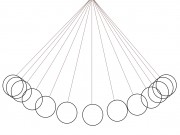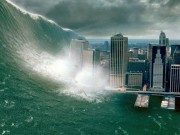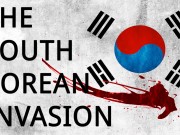I have read several other reviews of 13 Assassins and they all include a plot summary and background info on director Takashi Miike. I will not discuss these things because I feel they have been covered. Instead, I wish to focus on what the film is really about for me.
Humans try to recreate and experience life through art, especially cinema. This reproduction occurs in cycles. This version of 13 Assassins is a remake of a 1963 film of the same title which is based off a legend from the end of Japan’s Edo Period (1603-1868), a period of relative peace. The cyclical nature of reproduction can be attributed to the fact that the human condition has changed so little and that we are still struggling to come to terms with what it means to be human.
The film concerns the attempt to eliminate Lord Naritsugu (Goro Inagaki) because of his sadistic exploitation of his servants. Samurai Shinzaemon Shimada (Koji Yakusho) assembles 12 other assassins to make sure that Lord Naritsugu’s abuses of power do not continue to afflict the people of Japan. Shinzaemon’s old friend Hanbei Kitou (Masachika Ichimura) has taken an unbreakable oath to protect Lord Naritsugu despite the lord’s brutal treatment of his people.
Japan is still struggling with the historical narrative of the first half of the 20th century. The rapid industrialization and militarization of post-Edo Japan up to the end of World War II saw some of the most brutal fighting and massive loss of life in human history. Some naysayers of Miike say his films are ultraviolent for the sake of spectacle. However, when one keeps in mind the violent history of humankind and the trauma Japan instigated and suffered under totalitarian militarism, Miike’s use of violence seems apropos. World War II saw the death of over three million Japanese at the hands of a totalitarian regime that never faced a popular uprising. This film shows the necessity for challenging that type of authority.
Shinzaemon and his assassins plan an assault in a remote villiage that Naritsugu and his retainers will be traveling through as the final battle sequence begins with the words “Total Massacre.” The ensuing carnage is both hard to watch and beautiful. The intensity of the battle is heightened because of the hyper-reality of the no-CGI sequence. The flowing blood and flawless sound design suture the viewer into a gut-wrenching action sequence like no other. If one reads Lord Naritsugu as the totalitarian militarism that caused the deaths of millions of Japanese during World War II, and Hanbei as the population that supported such action, it becomes clear that the minority of the Japanese population, represented by Shinzaemon, paid the price for not being able to change the status quo. This remake of 13 Assassins demonstrates that the historical memory of any country is hard to shake, especially when it is as traumatic as Japan’s World War II experience. Questioning the role of the emperor and his regime meant a betrayal of Japan’s belief system of the first half of the 20th century.
This struggle between following tradition or breaking with that system is what lies at the heart of both the film and Japan’s historical memory. The final idea of the film is that once a country has had a belief system for so long, it no longer knows how to be anything else, but finding that “something else” is necessary.








